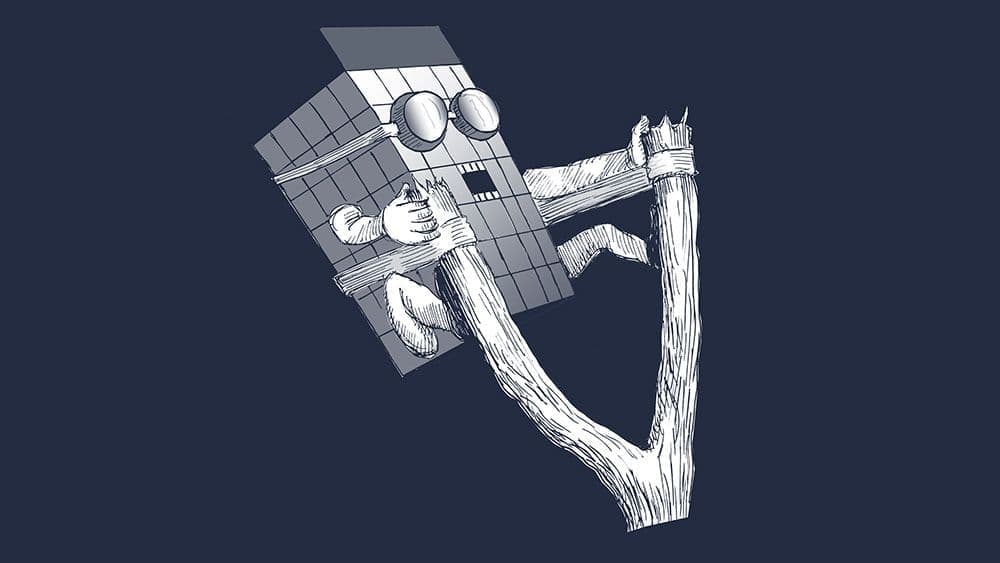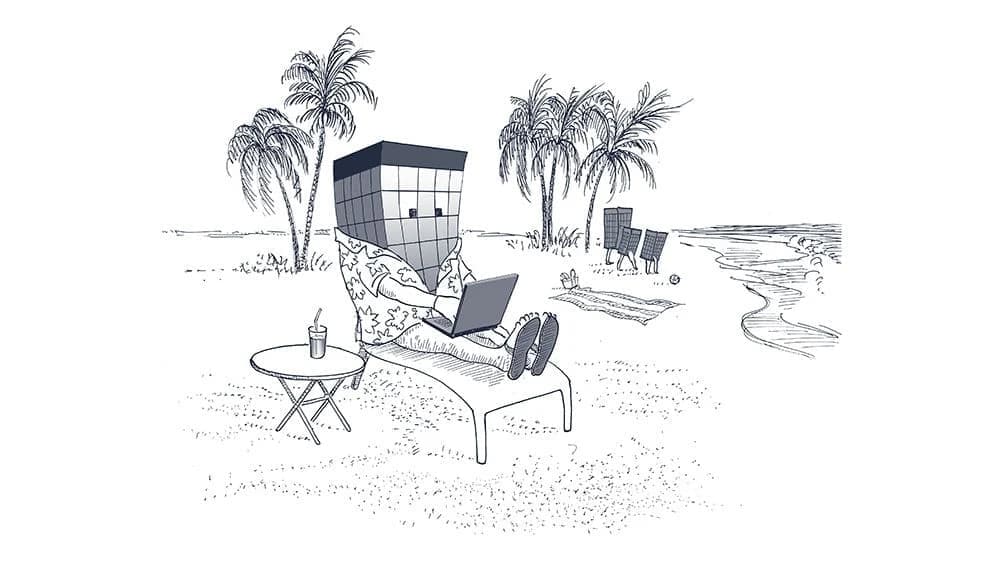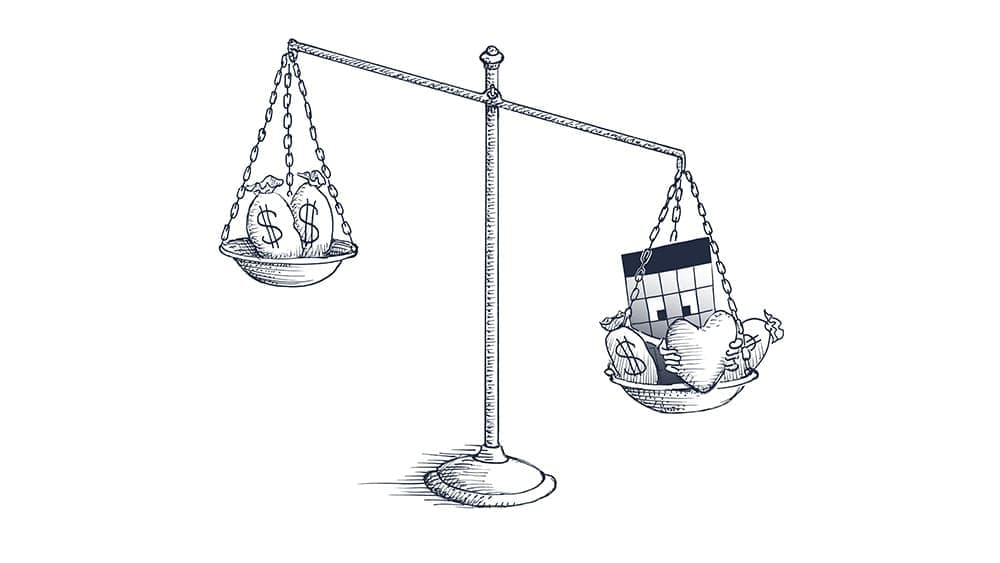What if I told you that my life was forever changed because I took someone’s outstretched hand in a fleeting moment? Faster than a finger snap or light switch, my life took a turn right instead of left.
We all experience moments that forever change us and we remember those fleeting sparks that defined us from that point forward. Like any good storyteller, we turn these extraordinary moments into folklore. However drawn out or fleeting, for better or worse, these collective moments are the ones we refer to from that point forward in only “the before times” and “after.” Some are personal, such as a time you met someone or when you chose one road or another. Others are collective, like the one we are experiencing today.
Like other pinnacle moments, we will forever remember this time period distinctly in the before and after. The COVID-19 period of 2020 into 2021 will join other notable shifts of trajectory in our living memory — some short and jarring changing the landscape of our lives forever, such as 9/11 or the day JFK was assassinated. Others long in the making, such as landing on the moon or the dawn of the internet.
But what happens after the moment? Newton’s third law still holds that with every action there’s an equal and opposite reaction, or otherwise stated, with every problem there’s a solution — it’s just a matter of taking action. If 2020 was the jarring action, then 2021 ushers the beginning of the pendulum swing toward a period of solutions.
In the COVID-19 era of 2020, we found ourselves surrounded by a forced chain reaction — a pivot. The post-COVID-19 world finds us on the other side of that pivot: a period of transition.
In this article, we identify trends that result from the actions of COVID-19 in our businesses, economics, and environments that will define this period of transition in 2021 and for years to come as we enter into the next industrial revolution.

Slingshot economy
If we survived 2020 by pivoting, anticipation is the fuel 2021 dreams are made of. The current prospects for early 2021 are already grim — the pandemic continues to rage taking countless lives and setting new records. Political and moral divides continue to deepen and intensify as the country grapples to find consensus amidst conflict. January 2021 feels more like an old aching 2020 hangover than a baby new year. And while the first few months of 2021 may feel like more of the same, there is always light in the future ahead. As vaccines roll out, politics move on, and more economic aid comes out in the days ahead, the wheels of the world will begin to turn once more. With most of the population anticipated to be vaccinated by summer, top health experts expect herd immunity by fall and a return to what we have identified as the “new normal” by the end of 2021. But what does that mean specifically for our businesses?
Nostalgia triggers a consumer rebound
The COVID-era caused unthinkable shutdowns in the consumer business community. From retail to restaurants, concerts to casinos, all forms of in-person experiences abruptly stopped. It may be hard to imagine after a year of restrained consumer trends that these sectors will return to pre-COVID conditions. They will return, and they will return with a vengeance.
The effect of these diversions removed from daily life will bring forth a wellspring of pent-up demand. Nostalgia for the “before times.'' If China’s consumer economy is any indication, revenge spending isn’t a dream where only younger consumers reside. According to McKinsey, China was not only the first country to be hit by the COVID-19 pandemic, it was also the first to recover economically from it. On Singles Day, November 11, the country’s two largest online retailers racked up record sales. By September 2020 not only had manufacturing in China reemerged, but so had consumer spending.

Athleisure transitions to executive glam leisure
Leisure travel will rebound in late 2021. Much like consumer spending, the pent up demand for travel will fuel the hospitality industry, but in a different way. No longer will airlines cater to the business traveler — instead, our newly shaped economy will enable a different kind of gig economy entity: the executive remote worker.
The travel and hospitality industry will find new faces to replace the traditional business model that catered to stiff-suited executive commuters. This isn’t to say that all business travel will cease; however, those businesses who have transitioned to more digital communications will not want to re-expand their travel budgets to pre-pandemic levels now that the business model of videoconferencing has all but replaced traditional face-to-face meetings. Must-attend conferences will still see in-person participation, but also expand to include more remote digital experiences. The days of the road-warrior sales team are in the past.
And the new executive remote worker? Those that have not only performed well but thrived in work-from-home environments will not shift easily back into the office full time. This once-in-a-generation shift is due largely to the COVID-19 restrictions but also due to advances in technology and automation. Many high-level executive jobs can be executed remotely in industries such as finance, technology, and business services — accounting, consulting, insurance, and the like. These industries can leverage not only a wider talent pool but also offer remote work opportunities that in-office-only jobs cannot, creating a vacuum for talent that knows it can work anywhere. This will change not only where highly skilled professionals work, but also will open up new opportunities for housing markets and yes, the travel industry. The dream of the gig economy worker — to work from anywhere — will become reality for the 9-5 executive, enabling them to travel freely. The hospitality industry will refocus on a new form of executive travel — the CEO in sandals with their family along for the trip.
.jpg)
Digital transformation ushers in the next industrial revolution
With every pivotal moment, there is the realization that there is no going backward: “normal” as it was defined will never exist again, and forever will be the “next normal.” This is the case with the rapid adoption of digital transformation in the last year.
Microsoft CEO Satya Nadella noted in April 2020 that “we’ve seen two years’ worth of digital transformation in two months.” Digital transformation simply is the application of technology to elevate repetitive, labor-intensive tasks — that’s the signature of an industrial revolution.
Consider, the first industrial revolution is marked by mechanization and the steam engine in 1765. The adoption of this technology forever changed every aspect of life, from agriculture to transportation to consumerization to population migration. The second revolution in 1870 was marked by technological advances in energy and communication, with the advent of electricity, bringing us telephones instead of telegraphs, lights instead of candles, and cars instead of carriages. The end of the 1960s brought the dawn of nuclear energy and computers and finally led us to what is arguably the current revolution — Industry 4.0 — the application of the internet, the age of digital transformation.
And while the transition wasn’t elegant for many, it was necessary. Surveyed executives reported that they moved 20 to 25 times faster than they thought possible on operational digital transformation like building supply-chain redundancies, improving data security, and increasing the use of advanced technologies. Additionally, businesses are beginning to see results. U.S. productivity in the third quarter of 2020 rose 4.6 percent, following a 10.6 percent increase in the second quarter, which is the largest six-month improvement since 1965.
.jpg)
Labor productivity, nonfarm business, 2016Q1 - 2020Q3
The future of digital transformation for businesses
Each revolution brings systemic shifts to the way we consume energy, how we communicate, where we live and work. Shifts in the ways we leverage technology to survive the pandemic have put us on the course to hyperdrive into the next phase of digital adoption. Consumers prefer digital experiences; COVID-19 necessitated the adoption.
Navigating the speed of technological advances will prove to be challenging for small- and mid-cap businesses. The reengineering of a company’s manual process to a digital one isn’t usually seamless on the first try as business rules are being formed on the fly, technologies are often still incapable and specialists in operational digitization are not found in the traditional IT department.
Industries hardest hit by the digital revolution are the most highly regulated such as healthcare, financial services, and legal services followed by more traditional companies in manufacturing with complex in-person experiences and multifaceted supply chains. While software companies market simple solutions, none work out of the box, and require deeply thought-out and well-documented processes to implement these solutions to the fullest potential.
However, as with all early adoption, the ease of implementation of these tools will continue to improve as businesses demand scalable solutions to meet consumer expectations. All businesses can benefit from the investment in digitized solutions — the retailer who can serve a wider audience through online sales, the health care provider who can increase patient preventive visits, the manufacturer who can digitize supply chain processes, the B2B solutions provider who can provide remote services. Unlike the last three revolutions, digital transformation in the fourth industrial age is not only about increased production, but more importantly, it is customer-centric.

The realization of brand value as shareholder value
Like digital transformation, the migration of the meaning of business beyond shareholder value isn’t new. From B Corps to board rooms, businesses have recognized their existence isn’t just to the cash counting shareholder - but the statement remained mostly a nod to a greater corporate consciousness until 2020.
Historically, the role of business in society has been reviewed from an economic and equity perspective, not through a social or moral lens. As the balance of power has shifted to consumers and accelerated by digital transformation, businesses find themselves no longer standing on the sidelines of human issues. As the consequence of a free market, where we vote with our wallets, the consumer questions not only the quality and value of what they are buying but also the brand behind it and what the brand stands for beyond the sale. This is the essence of stakeholder capitalism — profit with a purpose.
This emerging form of business meets community is born from the distrust of opaque corporations. Businesses are not divorced from the communities in which they operate and consumers are increasingly demanding transparency to understand the role businesses play, for better or worse.
This movement isn’t about abolishing profits. Consider a certified B Corp still functions to create profit. However, the B Corp’s focus isn’t on profit for profit’s sake — profit is the byproduct of and is invested in the overall community-focused mission of the company. Consider in a study that looked at 615 large- and mid-cap U.S. publicly listed companies from 2001 to 2015, MGI found that those with a long-term view — something that’s a core of stakeholder capitalism — outperformed the rest in earnings, revenue, investment, and job growth.
Brand value will finally earn its place on the balance sheet.
Transitioning toward revolution
While a transition time is defined as any period when the routine of life is uprooted and unstable, it is also time to be excited. Only a few times in our lifetime does the house of cards fall, the deck is reshuffled, and a new hand is dealt. We will forever remember 2020 as a time the deck was recast.
Not unlike many collective pivotal times in history, this current moment is at heart, a tragedy. However, it is a universal trait within humanity to look for hope regardless of the circumstance. Despite all our planning and strategy as leaders, we too believe in the power of the tipping point.
And the outstretched hand I took that fateful day? That pivotal moment in my own life happened unexpectedly after a business dinner. Having completed the conversation and planning on going separate ways, I got up from the table. A step ahead of me, unbeknownst to me at the time - my husband, reached back for my hand to help me out of the booth. I took it and in that instant, we knew the deck had been recast.
Subscribe to the Illumine8 Newsletter

Illustrations by John Gummere

